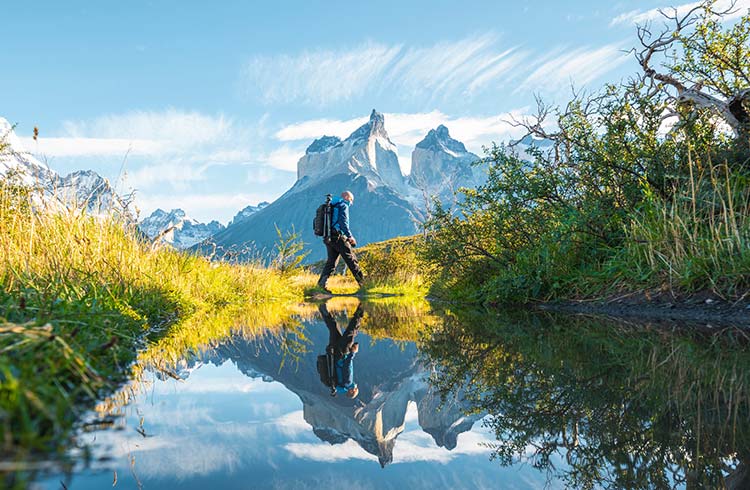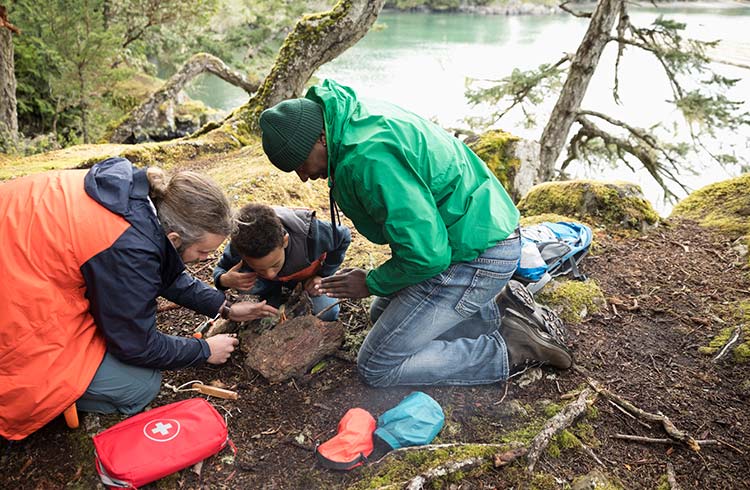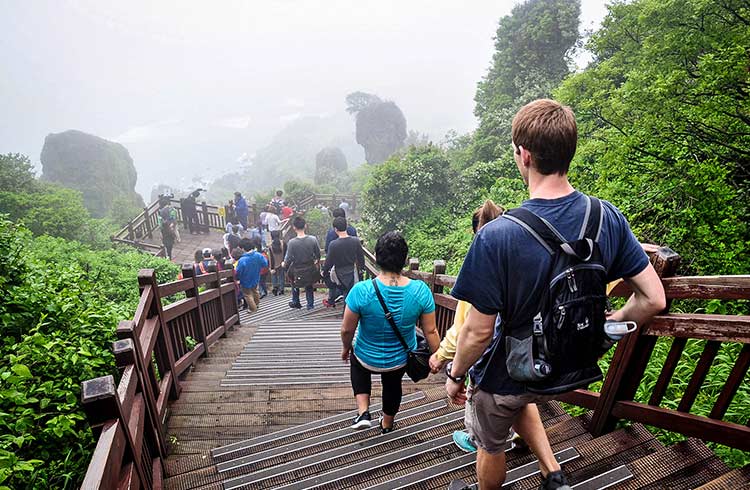Stay Safe While Hiking Solo: 4 Important Safety Tips
Coronavirus (COVID-19) and travel: The situation around the world is changing dramatically. Various governments have changed their travel warnings to restrict travel during this time. To understand how this may impact cover under your policy, please go to our FAQs and select your country of residence.
For the latest travel warnings and alerts around the world, read about lockdowns and border restrictions.
Going hiking alone in the wilderness? Our travel safety expert shares his top tips for you to stay safe while hiking solo.
Shares
 Photo © Getty Images/Marco Bottigelli
Photo © Getty Images/Marco Bottigelli
There is no better way to get back to nature and really discover your destination than by exploring the wilderness.
Some travelers think they can trek out into the scrub without adequate preparation, but this is always a huge mistake. Even the most hardened hikers adequately prepare before setting off for a hike, and you should too.
Here's what you need to know to stay safe while hiking solo.
- Essential hiking gear you should pack
- Let your friends and family know where you are going
- Know your limits before you go hiking
- What happens if I get lost?
Essential hiking gear you should pack
Before you set off – whether it's a short day hike or multi day trek – it's important to set yourself up with the right hiking equipment.
It's generally agreed that there are ten essentials to pack before you go for a wilderness walk:
- Map
- Compass
- Water
- Food (High-energy)
- Wet weather gear
- Fire starter
- First aid kit
- Knife (or leatherman/Swiss army knife)
- Flashlight
- Sunscreen/sunglasses
Once you have your essentials, there are a few extra bits and pieces that could help you along the way, depending on the length and level of danger of the trail you are hiking.
- Research the trail – look at online maps, blogs and reviews to know what you're in for
- Check the weather report before you go
- A water treatment kit can help purify water if your supply runs out
- Extra socks –you will be amazed how quickly you can tear through a pair trekking. Try buying wool socks
- Mosquito/insect repellent
- High-grade tape in case your shoes fall apart (which can happen if you are traveling for long distances and aren't wearing rugged hiking boots)
- Supportive braces for any weak knees or joints
- For longer trips, the hire or purchase of a tracking transmitter like a PLB (Personal Locator Beacon) will help emergency services rescue you in the event that you become lost.
A good pack is vital for a safe trip – but it is also a question of equipment versus mobility. You want a pack what will suit your requirements, but also make sure you aren't too weighed down by your backpack so you are free to move and walk without hurting yourself.
Let your friends and family know where you are going
If you are planning a trek, short or long, you already have an idea of where you will be – make sure that at least one other person knows this too.
Let them know a rough plan of your journey – where your key stops are and when you plan to return.
If you do this, and don't return when planned, it will give your friend an alarm bell – which means that if you need help, it will be sent quicker.
And most importantly… stick to what you set out to do!
It's not always possible, but if you can share your trek with a friend you will be far more relaxed and safer in an emergency situation.
Know your limits before you go hiking
Be realistic about your journey. If you are fantastically fit, of course you may have a better chance of achieving a two-week trek than someone who is out of shape. Don't reach beyond realistic capacity.
For longer treks, train in preparation for your adventure. Go on smaller walks to get your muscles acclimatized, or try cycling – it uses the same muscles you use for hiking.
If you are planning on wearing regular shoes on your walk, as opposed to proper hiking boots (which many trekkers prefer), you'll need to strengthen your ankles. Try doing a range of walks on rough, uneven ground.
Also, know the conditions of where you are trekking – weather, terrain, geographic and topographic. Are you going to be climbing up huge, slippery hills? Will you get drenched in a monsoon? Bitten by sandflies?
Do your research to know where you are going, and what you are up against.
What happens if I get lost? Am I covered by insurance?
Even if you are the most seasoned trekker, there is still the chance that you could end up lost. Find out what your travel insurance covers by reading your policy wording carefully.
If you require rescuing from emergency services, you could be up for a hefty bill for the trouble depending on the country you travel to. Check with the local authorities in your destination to determine what their procedures are for search and rescue.
If you aren't ready for a solo hike, organize your trip through an established hiking agency who will have established safety procedures. Read reviews to find out about the reliability of tour guides, what's included and excluded, and the level of difficulty to make sure you find the right hiking agency to suit your needs.
Get a travel insurance quote for Worldwide
You can buy at home or while traveling, and claim online from anywhere in the world. With 150+ adventure activities covered and 24/7 emergency assistance.
Related articles
Simple and flexible travel insurance
You can buy at home or while traveling, and claim online from anywhere in the world. With 150+ adventure activities covered and 24/7 emergency assistance.
Get a quote

5 Comments
I never recommend anyone to hike alone in Nepal. Even trekking as a twosome can be a risk at high altitudes. If one falls sick, what does the other do? Stay with the sick friend or abandon them to find help?
For trekking in Nepal, in my opinion, its always good to hire guide/porter. I always hire porter guide (a guide who is also a porter) when trekking alone. First you are safer, second you contribute to local people.
My solo trek essentials ...
Android phone with SIM chip, Google maps and MAPS.ME (good offline maps using GPS)
battery backup and cable (also small and light)
IPad also fully charged with MAPS apps.
Each unit is individually stowed in 2 ziplock bags (light, don't take up space and can be used without opening the zip. Good especially if in a tropical rain forests.
Instead of dropping a trail of stuff on the way (to find your way back if all else fails) just "drop a pin" on your map as you go. I confess I still use branches on the ground at tricky "intersections" to indicate direction... old girl guide habit meaning that I'm not totally reliant on tech stuff to get me home!
It blows me away how many goat tracks are actually available on these stand maps, not to mention the other downloadable maps although not usually interactive.
Now go carefully and enjoy complete freedom!
I always take a Garmin inreach mini satellite messaging device. Has SOS function, battery lasts for weeks if only turn on when needed or once per day to check messages. Is not cheap but far less than satellite phone and with reasonable subscription fees. I write a guidebook to a very remote region in South America and this device is invaluable to me. I rarely use it, but when I do, it's worth its weight in gold. And speaking of weight, it is minuscule and fits Inna pocket.
I approached a local at the spot where the mountain met the sea and asked if that was
the way to the next beach. I mentioned it looked difficult and he said if it wasn't difficult
and a little dangerous it wouldn't be any fun.
Nowadays all the safeguards rob the
trekker of any adventure.